The Empty Seventies
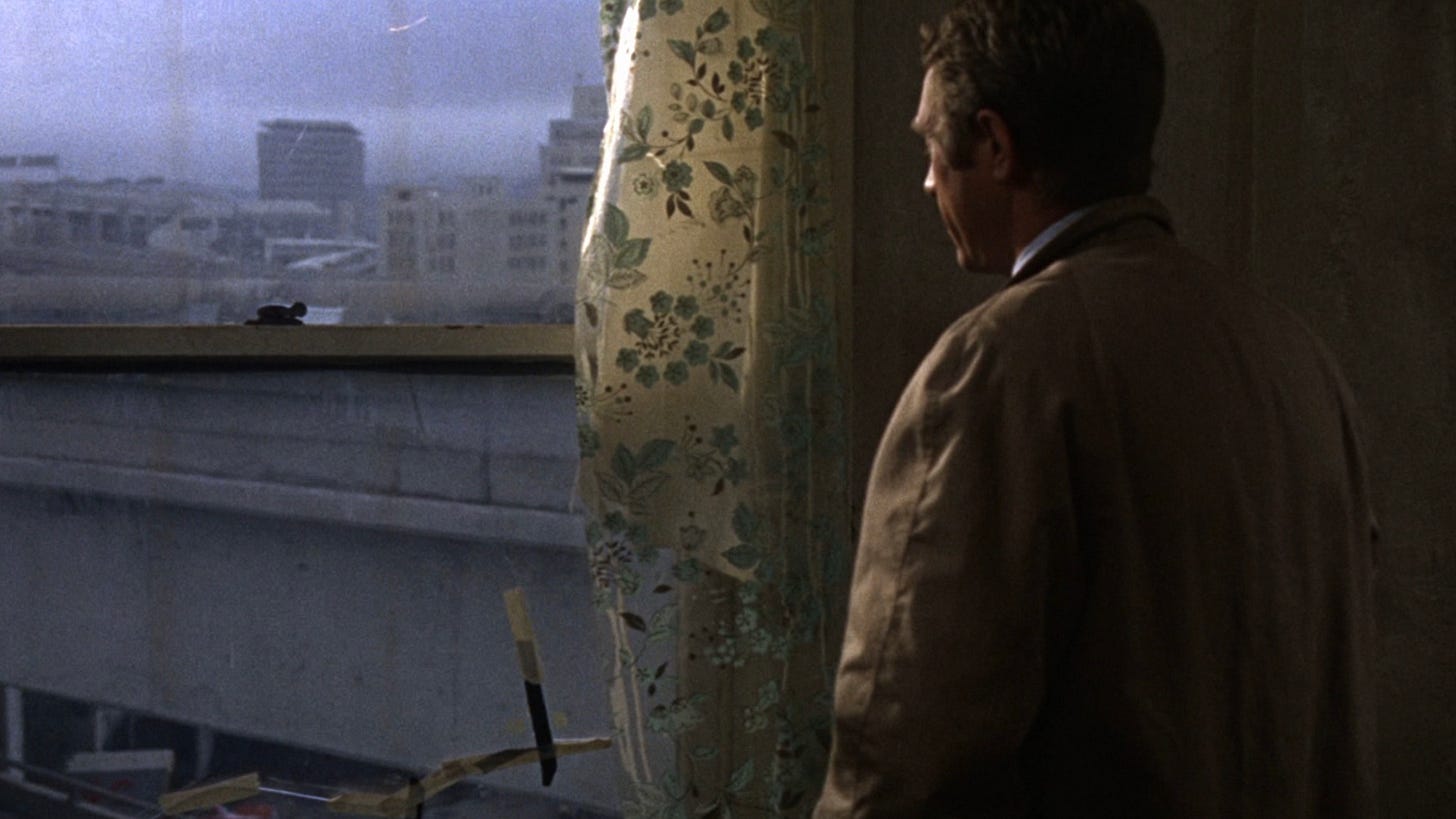
The Empty Seventies begin on October 17, 1968, when Bullitt is released. The phrase refers to a body of movies and recordings, though other texts fill out the field. The word “empty” holds the music of the phrase. Other words do better work as sense but fail as sound: silent, still, patient, open, quiet, spacious. The tang of negation rises from “empty” and we need that smoke coming up through the floor.
The Empty Seventies is a set of work that comes into view a few years before the decade begins and fades out in the early Eighties. This stretch of activity is characterized by a faith in patient recording, technical excellence, and artistic abandon. The gear people used is one historical factor. The lightweight Arriflex 35 mm film camera became common in late Sixties filmmaking just as solid state Neve mixing consoles were establishing a new standard in recording studios. These lenses and wires make events both vivid and uneven, warm to the the eye like the wobble of heat. The air itself is ripe and reflective in The Empty Seventies.

I was one year old when all of this began. I first absorbed these movies and records subcutaneously. When I became a sentient audience member, the Seventies were turning into the Eighties. I was an agent with a ghost memory that didn’t return until I was in my forties and saw everything for the second—and first—time.
What goes into The Empty Seventies? The films of Peter Yates and William Friedkin, the cinematography of William A. Fraker, the productions of Charles Stepney and Isaac Hayes, the recordings of the Art Ensemble of Chicago, Joni Mitchell, and dozens of others. Listen to Hot Buttered Soul or Phil Upchurch’s Darkness, Darkness or Court and Spark or hear how long the horse clomps along in the opening of Clint Eastwood’s High Plains Drifter.

Seventies Emptiness is space as time, the many minutes a technician waits for an artist to find her idea. It’s long passages in movies without scoring or extra-diegetic sound. Emptiness is what happens when you let things happen. There’s a lack of anxiety around the process, a confidence that experience is rich enough already and that the work doesn’t need to pass through a third or fourth stage after the stages of happening and being recorded. If everyone relaxes and aligns, the needle is threaded.
For lots of people, Bullitt is an eleven-minute car chase bracketed by some plot stuff. (This obituary for Yates only mentions the influence of the chase.) The car chase is so often the thing recovered from Bullitt; it is the event people most want to see bouncing back. As with any memory, it exists because the viewer writes and re-writes it into herself, never asking for permission. Bullitt doesn’t know about this and plays again, unchanged.
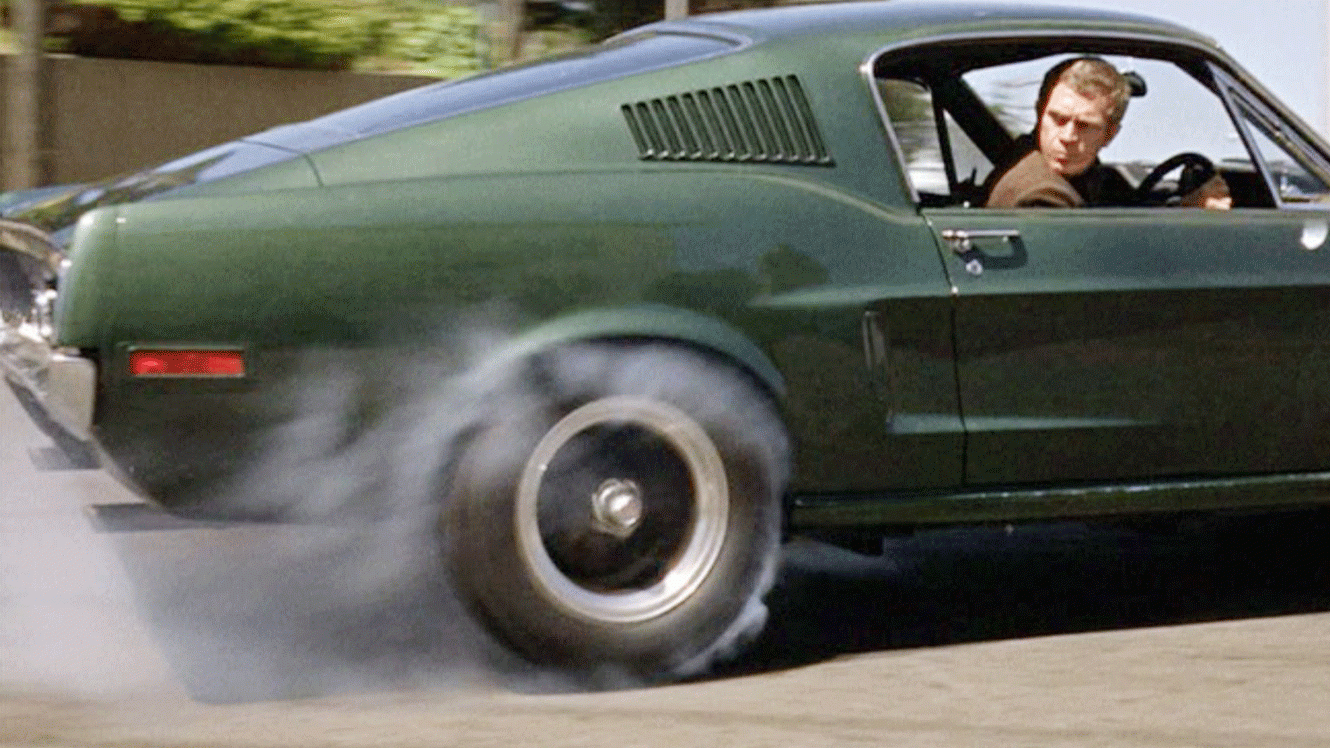
The chase isn’t why I love Bullitt, but it’s fantastic and works as a stand-alone film. Start watching the movie at 1:04:45, when a Sunshine cabbie played by Robert Duvall drops Frank Bullitt (McQueen) at the car wash. Bullitt picks up his 1968 Ford Mustang GT and espies the bad guys sitting in a 1968 Dodge Charger R/T 440, looking silently back at him. We are off to the races, which end at about 1:15:35.

In Issue 56 of Moviemaker, from 2004, cinematographer William A. Fraker explained: “I met director Peter Yates and we talked about a picture he’d done called Robbery, where the opening sequence has a car chase. I thought he did a terrific job and when I asked how fast they were going, he said they couldn’t go over 60 to 65 miles per hour. That night we made the decision that on Bullitt we weren’t going to speed up the camera. We were going to shoot 24 frames and speed the cars up. We were the first to mount cameras on the cars so they wouldn’t shake.”

“The fastest we went was 124 mph. I was sitting six inches off the ground in the car, going 124, and the centrifugal force of the car wouldn’t allow me to move right or left! Steve McQueen is coming alongside, I’ve got to get his close-up and I fought and fought, thinking, ‘I gotta get the shot!’ In one scene, Steve and the stunt driver come down a hill and have to turn right. The driver turns too sharp, and has to straighten out so the car wouldn’t flip. But when he straightens out, he hits the car that was parked there and wipes out the camera, too! Our idea was to take the audience on that trip, which really worked beautifully. The first time I saw it with an audience, they applauded at the end of the chase. It was absolutely sensational.”
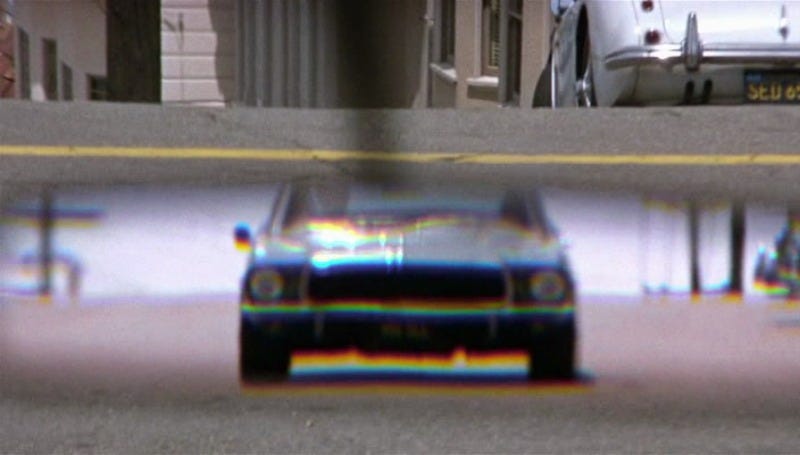
In December of 1968, Roger Ebert wrote, “Bullitt, as everybody has heard by now, also includes a brilliant chase scene. McQueen (doing his own driving) is chased by, and chases, a couple of gangsters up and down San Francisco’s hills. They slam into intersections, bounce halfway down the next hill, scrape by half a dozen near-misses, sideswipe each other, and leave your stomach somewhere in the basement for about 11 minutes.”
Yates and Fraker and McQueen were piled into cars going over 100 miles an hour without seatbelts or helmets. Their methods were decades away from CGI and the results were, too. The chase isn’t cool in the sense that Mad Max: Fury Road is cool. All the zooming down and around feels uncontrolled and awkward. The chase is a queasy stumble full of visceral discomfort and teeth-grinding agitation. You do not want to be in a car chase after watching Bullitt.
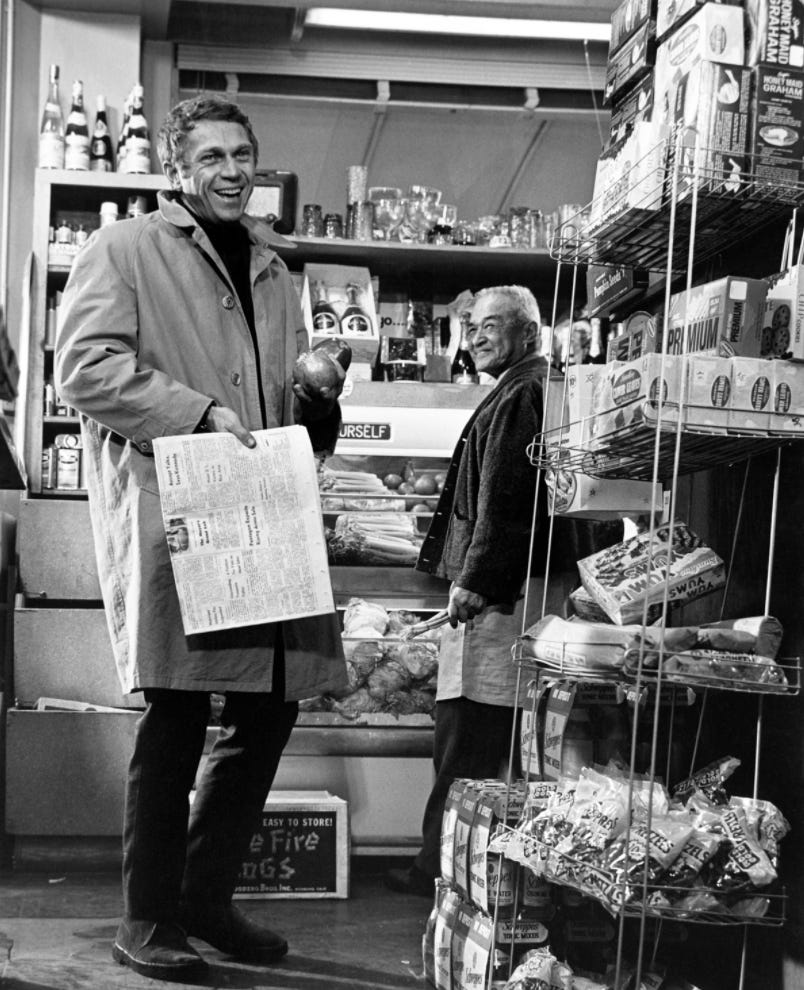
It makes sense that the chase is terrifying, because Yates said that “reality” was the style he wanted to be known for. So the car chase is patiently rendered and feels like mayhem. The rest of the film, which is almost two hours, is life on life’s terms, rendered exactly like the chase, meaning that it is accurate to the slow and not particularly hectic pace of events, even as a cop guarding a witness. Bullitt uses his gun only once and never gets into a physical fight with anyone.
In the commentary track for Bullitt, Yates repeats the phrase “less is more” several times, explaining several moments when there is absolutely no dialogue at all. McQueen acts with his eyes. He told Yates he was a “reactor, not an actor.” Fraker is as important as anyone here, and Yates confirms that both of them worked on commercials, which gave them extensive knowledge of long lenses. The key to Bullitt is not chases or gunfights but scenes happening in two planes at once.

Often, Fraker just shoots a scene with a long lens to put two groups in one frame, each with their own psychic space.

In a scene that embodies how comfortable Yates and McQueen were with the process, Bullitt accompanies a clutch of medics carrying a wounded cop to safety. (Most of the hospital staff used in the film were actual employees.) One medic stationed behind the ambulance says “Somebody screwed up!” when it turns out that both ambulance doors aren’t open. McQueen hops into the vehicle and opens the remaining door. Fraker keeps rolling. The mistake stays in the picture.
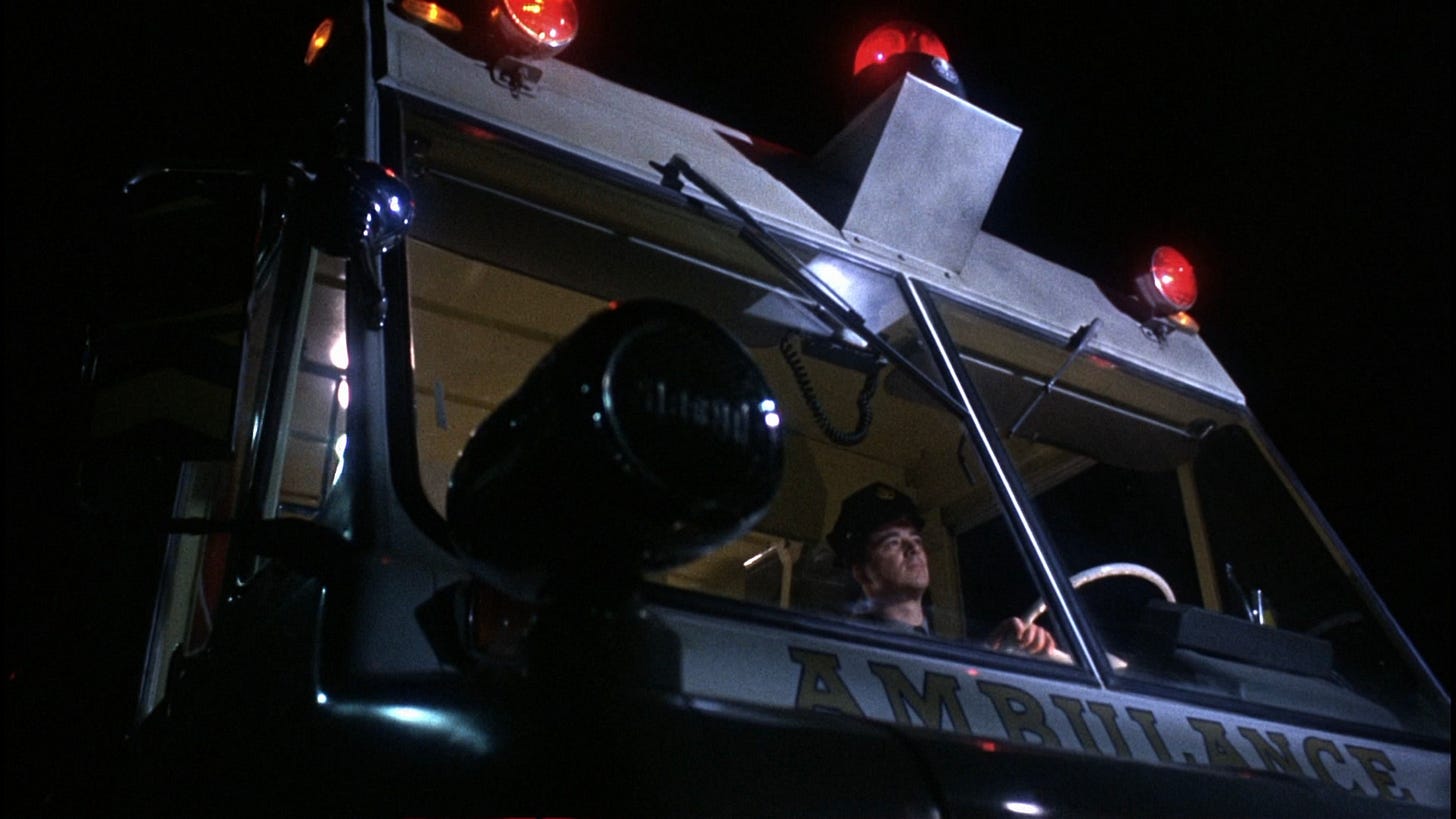
TCM tells us that Bullitt was “the first film shot entirely on location with an all-Hollywood crew and the first to use the new lightweight Arriflex cameras exclusively.” In the October 2005 edition of American Cinematographer, Jim Hemphill wrote that “Fraker makes extensive use of long lenses to isolate McQueen in the frame, giving him a larger-than-life quality while also emphasizing his character’s physical and emotional separation from those around him.…The cinematographer composes many images through windows, doorways and other frames, giving the picture a voyeuristic quality; this approach, combined with the decision to shoot the entire picture on location, gives the movie a sense of realism that helps to overcome the routine storyline.”

Yates and Fraker make the chrome tubing of a hospital shine like cherries but it’s their patience that make the film go quietly mad. Bullitt and his partner, Delgetti (Don Gordon) spend three minutes unpacking two suitcases. Yates and the prop master packed both cases but didn’t tell the actors what they were going to find, only what they were looking for. Watch Fast Five and write down what happens in the course of any three minutes. It will contain more than “unpack.”




